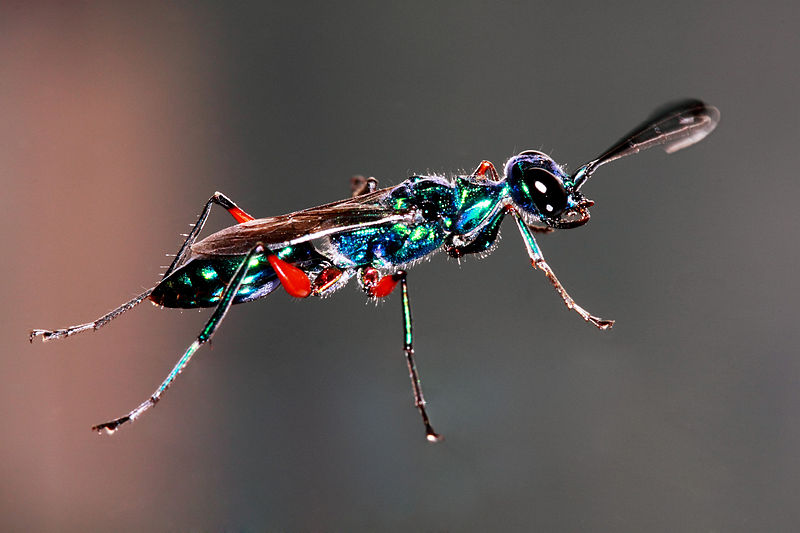Please note: Osher Rainforest will be closed for maintenance Jan. 14–16.
Science News
Those Amazing Animals
January 14, 2013

With all of the recent space news, we didn’t want to overlook some current research on the natural world—from hyper-clean parasitic wasps to waterfall-climbing fish to emotional birds.
We love parasitic insect stories and this one is a doozy—a beautiful, yet evil creature, the emerald cockroach or jewel wasp, that paralyzes and then zombifies cockroaches. The female wasp behaves this way to lay one solitary egg on the cockroach. When the egg hatches, the larva emerges and eventually eats its way into the belly of the roach. There, the larva will make a cocoon and grow into a beautiful new wasp. This part is all old news—and for more gory details, see Carl Zimmer’s post on National Geographic, complete with video!
But here’s the new part: before the larva makes its cocoon, it completely sterilizes the inside of the not-surprisingly filthy cockroach!
Cockroaches carry bacteria and other disease-carrying microbes around in their bellies—very unhealthy for growing wasp larvae. German researchers found that the larvae secrete “several types of antibiotics, specifically the chemicals mellein and micromolide,” according to LiveScience, that kill even the nastiest of microbes.
The research, published last week in the Proceedings of the National Academy of Sciences, finds these secretions promising for developing future human antibiotics.
If you’re a fish, how do you climb a waterfall? Well, if you’re a Nopili goby, the same way you eat, with your mouth, according to new research in PLoS ONE. The fish is known to inch its way up waterfalls as tall as 100 meters by using a combination of two suckers; one of these is an oral sucker also used for feeding on algae.
The researchers filmed jaw muscle movement in these fish while climbing and eating, and found that the overall movements were similar during both activities. (A video of the climbing can be found at Discover.) The researchers note that it is difficult to determine whether feeding movements were adapted for climbing, or vice versa, but the similarities are consistent with the idea that these fish have learned to use the same muscles to meet two very different needs of their unique lifestyle.
ScienceShot describes this as “exaptation—when a structure that was meant for one function is co-opted for another.”
Finally, ever since I saw the headline, “Birds May Get Emotional Over Birdsong,” it made me think of this line from High Fidelity (the movie, but likely the Nick Hornby book, too), “Did I listen to pop music because I was miserable? Or was I miserable because I listened to pop music?”
Well, it turns out that birds don’t get that emotional over their kin’s tweets, but researchers at Emory University found that white-throated sparrows experience some of the same emotions as a human listening to music. The recent study, published in the Frontiers of Evolutionary Neuroscience, demonstrates that taste is everything for these songs.
“We found that the same neural reward system is activated in female birds in the breeding state that are listening to male birdsong, and in people listening to music that they like,” says Sarah Earp, lead author of the study. Turns out another male hearing that same male birdsong likens it to music from scary scenes of a horror movie.
For more about this bird-brained study and its origins, check out this press release.
(Title thanks to the 1980s TV show)
Image: Sharadpunita/Wikipedia